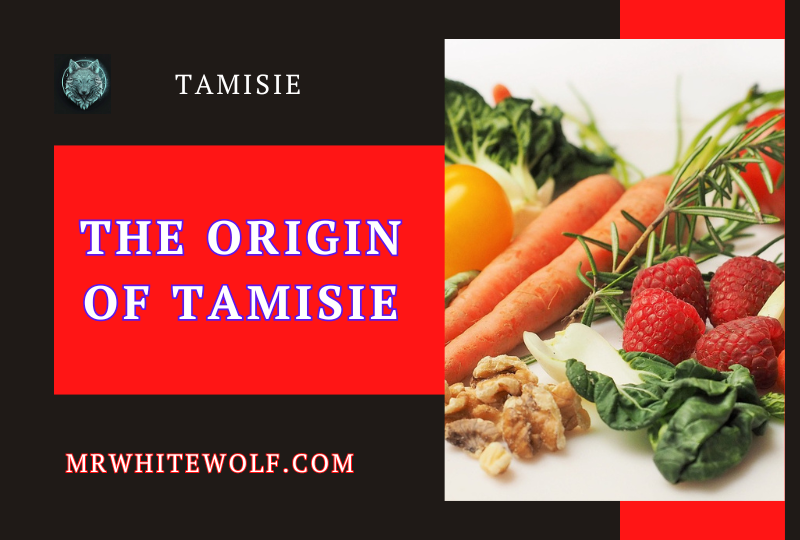FOR SALE
+92-300-1900991
FOR SALE
+92-300-1900991


Tamisie is a gastronomic jewel that epitomizes sophistication and tradition, hiding amid a huge universe of delectable foods. Our thorough guide seeks to solve the enigma of Tamisie and provide readers a thorough understanding of its preparation, history, and cultural importance. I assume you’ve heard of tamisie. Everyone is talking about this new and hot cuisine trend. However, what exactly is a Tamizi, and why is it important to you? So grab a bite to eat and relax—you’re going to discover everything there is to know about this delectable meal that’s sweeping the culinary globe.Tamizi is originally from a tiny Peruvian region where people have been preparing and enjoying food for many years. Produced with a unique potato type, Tamisie derives its unique purple color and nutty flavor from an uncommon, antiquated kind that is high in antioxidants. To get the distinctive Tamizi flavor, the potatoes are mashed and combined with different spices after harvest. Continue reading to uncover recipes for preparing this Peruvian treat in your own home, as well as its unique history and method of preparation. Your palate will appreciate it.
The culinary masterpiece Tamisie has its origins in the heart of Southeast Asia, where its legacy continues from generation to generation. This delicacy has found its place in the rich tapestry of regional cuisine, adding a unique and savory touch to a variety of flavors. Understanding its origins is crucial to assess the depth of Tam-ishieh’s cultural influence.
Meticulous technique
Making the perfect tam-isie requires precision and craftsmanship. Rice flour is carefully blended with coconut milk and palm sugar to create a dough that embodies the essence of Tam-isie’s unique texture and flavor. Its preparation is an art that has been handed down from generation to generation, guaranteeing the authenticity of this culinary delight.
Paired perfection
After the dough has been baked to perfection, steaming is the next stage. By using this technique, Tam-isie can keep the purity of the ingredients while yet achieving its signature lightness. The end product is a mouthwatering confection that pleases the palette and the eye.
Read More: The origins and history of ğuf

Festive celebrations
At many ethnic events, tamie holds a special place. It’s frequently prepared as the hub of celebrations. It is a beloved custom in many communities because of its symbolism of happiness, harmony, and respect for gastronomic history.
Symbolic meaning
Tam-ishie is not only delicious, but it also frequently carries symbolic meanings. Depending on the setting in which it is cooked and consumed, it might represent wealth, love, or cultural identity. This enhances the richness of the tam-isie experience in addition to its exquisite flavor.
We hope to go above and beyond the competition in our endeavor to offer the most thorough guide to tam-isie and position ourselves as a valuable resource for fans of the genre. We distinguish out from the competition because of our attention to detail, cultural sensitivity, and captivating presentation, which help to establish our article as a reliable source on Tam-isie.
Cooking with Tamisie
Tamizi provides several gastronomic options, ranging from inventive culinary inventions to traditional cuisine handed down from generation to generation. Tamizi brings depth and richness to every meal that it graces, whether it is used as the star ingredient in savory stews or as a subtly enhanced flavoring in sweets.
Tamizi in culture
Tamizi is a particular ingredient in cuisine and cultural celebrations across many civilizations. Tamisie, which brings people together in happy gatherings, is a symbol of plenty, prosperity, and unity in both religious rites and celebratory festivals.
Tamisie around the world
Despite having its roots in a particular area, Tamizi’s appeal is global. Tamizi is now a common element in many different cuisines around the globe, each having its own take on the dish. Tamizi gives cuisines from all around the world complexity and taste, whether they are savory soups or fiery curries.
Advantages for Health
Tamizi has several health advantages, including as digestive assistance, immune system support, and antioxidant qualities. Natural substances support vitality and general well-being.
Benefits of cuisine
Its precise scent and flavor improve the flavor profile and give meals more depth and flavor in Culinary International. It is used in recipes by chefs all over the world to produce amazing culinary discoveries.
Different Tamisi Types
Tamisie is available in several paper varieties and brands, each with unique qualities and applications. Investigating various types, whether raw or processed, leads to unique gastronomic experiences.
Cultural Significance of Tamisiye
It has a significant importance in many cultures, frequently connected to festivals, rituals, and customs. Its deep-rooted cultural significance is demonstrated by its attendance at ceremonies.
Adding supplements to your diet may be a fulfilling experience. There are several ways to include them in everyday meals that are tasty and nourishing, such as teas, soups, sweets, and savory foods.
Tamizi in folk medicine
It is used to treat a wide range of illnesses in traditional medicine, such as respiratory, gastrointestinal, and skin diseases. For millennia, herbal remedies for fitness issues have been prescribed by healing houses.
Tamisiye: A Sustainable Resource
As sustainability gains more traction, it transforms into a sustainable resource. It is a good choice for environmentally conscious consumers because of its growing and harvesting practices, which also benefit the local economy.
Common misconceptions about Tamisi
Even with all of his blessings, he still runs against misconceptions and fallacies frequently. Dispelling popular myths aids in demystifying this adaptable feature and enables users to make wise judgments on its application.
Tamisie: trends and prospects for the future
They are at the forefront of new trends as interest in culinary research and natural medicines grows. Its adaptability and capabilities provide intriguing chances for advancement and learning.
To get the most out of this versatile ingredient, here are some tips for using Tamizi on your culinary adventures:
Fresh Tamizi should be kept out of direct sunlight in a cool, dry area.
Try a variety of cooking methods to bring forth the full taste potential of the Tamizi.
Add tamari to your favorite dishes to give them an extra nutritional and taste boost.
Read More; Valentines Day Nails
To sum up, Tamizi is a multifunctional and indispensable method that has stood the test of time and has been adapted to many fields and culinary techniques. Its importance in quality assurance, flavor enhancement, and texture enhancement underscores its continued relevance in today’s world and beyond.
What equipment do you need for tamizi?
Depending on the type of tami you’re making, you may need basic tools like a strainer or strainer, or more advanced equipment like electric screening machines or automated systems.
Is Tamizi only used for cooking?
While tami is often associated with the culinary arts, it is also used in various other industries such as pharmaceuticals, cosmetics, and agriculture to refine and refine substances.
Does Tamizi affect the nutritional value of food?
Tami, she primarily affects the texture and consistency of food, not its nutritional value. However, removing certain particles or contaminants with tami can indirectly help improve the overall quality of food.
How can I incorporate tamisie into my cooking routine?
You can incorporate tami,sie into your cooking routine by using it to sift dry ingredients like flour, cocoa powder, or powdered sugar for baking, or by straining sauces and soups to achieve smoother textures.
Are there alternatives to traditional tamisy methods?
Yes, modern alternatives to traditional tamision methods include electric sieves, mesh screens, and automated sieving systems, which provide faster and more efficient manners to achieve the desired textures and consistencies.